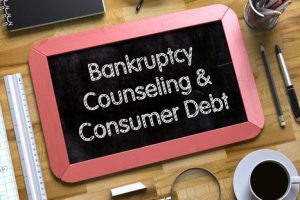The Different Types Of Bankruptcy

The Bankruptcy Code provides for several different types of consumer bankruptcy, but nearly all these voluntary petitions fall under either Chapter 7 or Chapter 13.
Both these plans have some things in common. In each case, the debtor must undergo pre-filing debt counselling, as well as a post-filing financial management class. Both types trigger the automatic stay, in most cases. So, moneylenders may not take any adverse action against debtors while their cases are pending. That includes demands for payment, harassing phone calls, repossession, eviction, and foreclosure.
There are some significant differences as well, as each chapter is designed for a certain kind of debt problem.
Chapter 7
Sometimes called “liquidation” bankruptcy, although that term is not accurate, Chapter 7 is essentially a declaration that the debtor is completely unable to pay his/her outstanding unsecured debts in the way that the moneylender demands they be paid. Therefore, the debtor gives permission for the bankruptcy judge to seize and sell all nonexempt assets to satisfy that debt.
Most people do not have nonexempt assets, unless they own luxury items, like vacations homes and boats. Even then, the trustee (person who oversees the bankruptcy on behalf of the judge) might not seize the item, if its sale would not significantly benefit the creditors. For example, a vacation home might have a large mortgage that must be satisfied or a boat might need substantial work to get it in a saleable condition.
About six weeks after the petitioner files a petition and schedules, the trustee inspects the paperwork to ensure that it is all in order and also verifies the debtor’s income and identity.
Typically, about six months later, the judge discharges all unsecured debts. This category includes all medical bills, Small Business Administration loans, and credit cards, as well as most income taxes and some student loans. As a result, the debtor has the fresh financial start which the Bankruptcy Code guarantees.
Chapter 13
The so-called “wage earner plan” is often ideal for people who are behind on home mortgage payments, auto loans, and other secured debts. After reviewing the debtor’s paperwork, the trustee basically places the debtor on an allowance for either three or five years, largely depending on the household income level, to give the debtor a chance to catch up on past-due secured debt payments. The moneylenders may not successfully object to the debtor’s proposed repayment plan except in very rare circumstances, and they may not take any adverse action against debtors during the protected repayment period.
At the end of three or five years, any remaining unsecured debts are discharged, and the debtor has a fresh financial start while retaining all of his or her exempt assets.
Chapter 20
This one is not in the bankruptcy code, but it is a very common approach. Some Chapter 13 debtors soon realize that they cannot afford the monthly debt consolidation payment. In these cases, it is sometimes best to voluntarily dismiss the Chapter 13 and refile it as a Chapter 7, since the debtor has a right to convert the case at almost any time. In this way, the debtor needs not make any more payments, the automatic stay remains in place, and the debtor receives a fresh start much earlier than under a Chapter 13.
Connect With Experienced Attorneys
Different debtors have different bankruptcy choices. For a free consultation with an experienced bankruptcy attorney in Chicago, contact the Bentz Holguin Law Firm, LLC. Convenient payment plans are available.
Resource:
uscourts.gov/services-forms/bankruptcy/bankruptcy-basics/chapter-7-bankruptcy-basics


